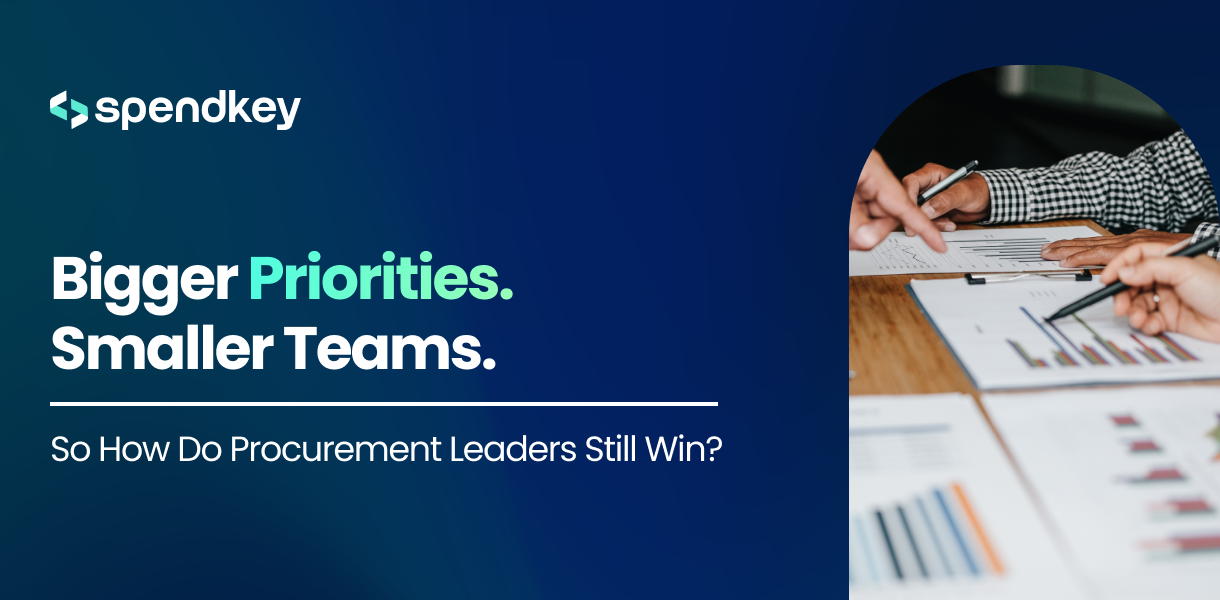Spend Category Management: Why Your Business Needs It?


Today, businesses are buying goods & services from multiple suppliers based on their needs and even from countries all over the world. This has made it difficult for procurement teams to track, manage and control their suppliers.
This is because most procurement teams manually classify their spend without a clear classification framework in place. The manual spend categorisation ways are often erroneous and don’t provide an accurate view of spend across categories, suppliers, and locations.
This guide will teach you how to use your spend data to transform your business for profitable growth.

Download our free Low Risk Low Value (LVLR® ) framework to get complete spend visibility and achieve over 20% reduction in costs.

Download our Category Management Optimiser Checklist that has helped business leaders monitor and improve the effectiveness of their existing spend categories and subcategories enabling them to add millions to their bottom line.

Download our Transforming Finance With Artificial Intelligence (AI) Guide now and explore how AI can help you improve efficiency, build agility and make optimal strategic business decisions.

A spend analytics software that automatically categorise the spend is the solution.
Spend category management is the process of classifying and grouping a company’s spend based on products, services, suppliers, departments, etc.
Spend categorisation typically involves:
This can help businesses to devise a sourcing strategy, source strategically and spend mindfully to ultimately improve the procurement strategy.
Unlike the 1990s, the goal of category management is not just limited to sales and cost savings today.
Today, strategic category management is an end-to-end incremental approach aimed at:
Spend analytics tools unify, simplify, and standardize the otherwise unstructured raw spend data. This helps you gain a true picture of the spend across-the-enterprise. This also answers the questions such as:
By implementing an effective spend category management and comprehensive spend analytics, companies can foresee supply chain risks and improve their business continuity planning. This is possible by:
As Una suggests and we agree, Indirect spend accounts for 30% of a company’s total spend but is rarely managed due to the lack of visibility into:
As a result, businesses miss out on cost savings & optimization opportunities hiding beneath indirect spend analysis. Spend category management helps you take control of your indirect spend and reduce it by as much as 10%.
An efficient spend categorisation strategy provides you within-depth insights into your supplier base. It clearly helps you discover:
Using spend analysis in supply chain management, the procurement team get a granular view of the spend patterns. As a result, procurement leaders are in a much better place to:
Spend consolidation & spend data analytics are direct functions of category management directly contributing to saving costs. By individually managing the sourcing for each category, procurement leaders can:
In the 21st century, data is the new currency. With real-time and accurate spend insights at their fingertips, procurement leaders can get a clear view of the organisation’s buying patterns and make optimal decisions to improve spend under management.
Category management drives constant standardization & value generation that goes beyond just cost savings. It drives long-term growth by supplier innovation along with the budget cycle. In addition, category management helps in improving service quality and facilitates world-class procurement processes for businesses.
The complexity of spend category management is another hurdle. Companies have so many categories & sub-categories, thousands of suppliers across countries, and lakhs of daily transactions. As a result, it’s next to impossible for CPOs to categorize the spend data and analyse it.
But, a spend analytics solution simplify the process for you as it automatically categorize the business spend.
To implement category management in its true spirit, we need spend analytics.

The smart and intelligent spend analytics tools help businesses auto-classify their spend into accurate spend categories or cost codes. Built on a foundation of modern AI/ML technology, these tools offer a standard spend classification taxonomy and are flexible enough to classify spend based on customised classification taxonomy that the business may want to adopt.
Spend analytics solutions can help you extract the complete purchase history & spend data to answer the queries like:
Spendkey is the best spend analytics solution as it lets you:
How?
Spendkey extracts, cleanse, standardizes, auto-maps, and enriches the raw spend data to amplify your visibility.
How?
Spendkey can help you auto-categorise your spend and helps your review thousands of transactions under a few minutes to yield actionable insights for your business. Moreover, Spendkey helps you reduce your management overhead by as high as 95%.
How?
Built on the latest AI/ML technologies, Spendkey can help you perform what-if scenarios and predictions to stay prepared.
How?
Spendkey’s data transformation, category management and intuitive analytics capabilities help you get a comprehensive view of your supplier base and spending behaviour. You’ll be surprised to see the hidden savings opportunities that you had been missing out on.
How?
Spendkey frees up time otherwise invested in sorting, collecting, and reporting data. You have more time at hand to focus on generating valuable innovative solutions for your clients.
Are you ready to begin your category management journey?
Try Spendkey. Let us help you start today.



Why are some procurement teams consistently hitting their goals while others struggle — even with the same suppliers, budgets, and team sizes?

Traditionally, reviewing contracts meant reading through them line by line, an approach that was both labor-intensive and time-consuming. By the time teams extracted insights from numerous contracts, the information was often outdated or not actionable.

Procurement is evolving, and its role as a value generator within businesses is more crucial than ever. For procurement leaders, balancing cost management with extending influence into strategic areas is no easy task, and the pressure to deliver is immense.